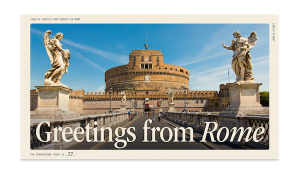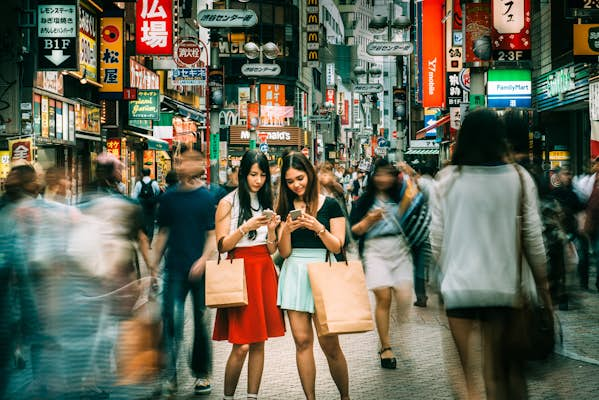
Exploring Japan’s capital is a mind-blowing experience, but it can also blow your budget. Don’t despair – there’s an abundance of things to do and see in Tokyo that don’t cost a single yen. From gardens and temples to contemporary art, sumo practice and a world-famous fish market, here’s a list of Tokyo’s best free attractions.
1. Stroll the grounds of the Imperial Palace
Follow the moats and paths surrounding Tokyo’s central point, the Imperial Palace, for views of its famous bridges and remnants of the old medieval keep. It’s 5km (3 miles) around the palace grounds – a popular local jogging course if you want to burn a few calories while taking in the scenery.
Take a detour through the accompanying gardens without dipping into your wallet. The Imperial Palace East Gardens encompass the honmaru and ninomaru, the former innermost circles of the castle, featuring broad lawns, small stretches of woodland and seasonal flora (check out what’s in bloom on the Flower Calendar). Kokyo Gaien National Garden marks the area in front of the palace’s Sakuradamon Gate, where Ii Naosuke, a controversial proponent of opening Edo-period Japan to the outside world, was assassinated in 1860. Kitanomaru Park is the pick of the bunch, home of the Budokan, Japan’s premier martial arts arena, and the Chidorigafuchi Moat – in spring, the path encircling the moat is enlivened by blooming cherry blossoms.
2. Follow the pilgrim route to Sensō-ji
Follow in the footsteps of countless pilgrims by approaching Sensō-ji, Tokyo’s most famous Buddhist temple, in Asakusa. The way is lined with colorful stalls selling all manner of souvenirs, from giant rice crackers to washi paper fans. Senso-ji is also Tokyo’s most-visited religious monument, so prepare for swarms of photo-snapping tourists and a smattering of locals decked out in traditional kimono.
Planning tip: Visit at the crack of dawn – the temple is open from 6am – for a quieter excursion.
Get more travel inspiration, tips and exclusive offers sent straight to your inbox with our weekly newsletter. 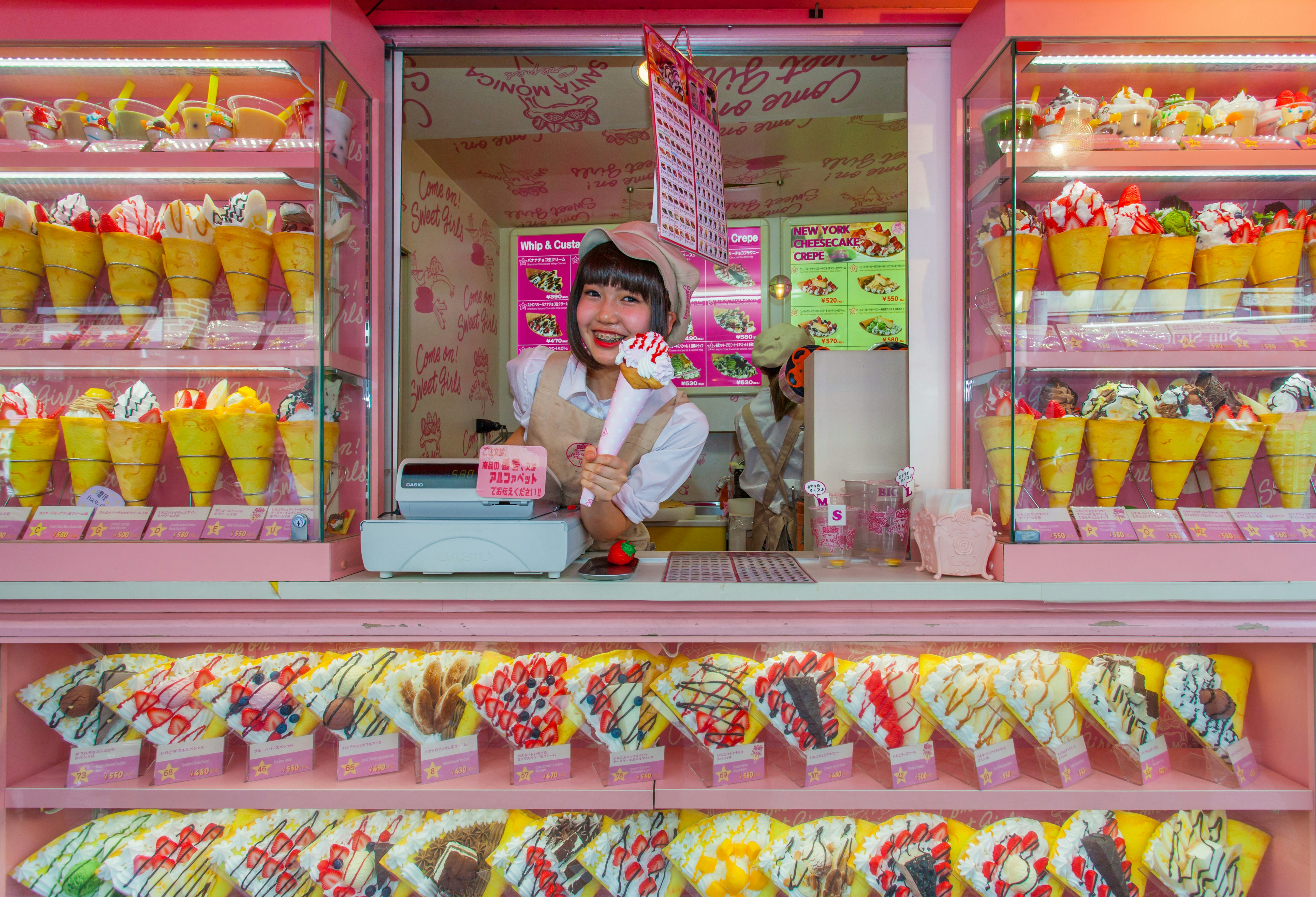 Wandering the fascinating Harajuku neighborhood is a great way to spend some free time © StockStudio Aerials / Shutterstock
Wandering the fascinating Harajuku neighborhood is a great way to spend some free time © StockStudio Aerials / Shutterstock
3. Explore the streets of Harajuku
The Harajuku neighborhood is probably the world’s greatest eye candy; its main street Takshita Dori bursts forth in a maelstrom of vivid colors, kawaii (cute) motifs and the constant babble of frivolous consumers.
Stroll tree-lined Omote-sandō, a glam boulevard of up-scale boutiques housed in contemporary buildings, or hang out in Yoyogi-kōen (Yoyogi Park). The sprawling green space hosts frequent international festivals celebrating cultures from Ireland to India, Spain to Thailand, Brazil to Sri Lanka, and many more.
4. See the tuna auction at Toyosu Market
Want to witness Tokyo’s famous tuna auction at Toyosu Market? Set your alarm early because it starts around 5:30am and lasts approximately one hour. A limited number of visitors who apply in advance can watch from a viewing platform near the market floor; check the website for details.
Whilst Toyosu Market may lack the rustic charm of its predecessor in Tsukiji, visitors remain free to wander the sprawling complex. Infographics and exhibition spaces detail the storied history of the world’s greatest fish market; scan the clearly indicated QR codes for multilingual interactive tours.
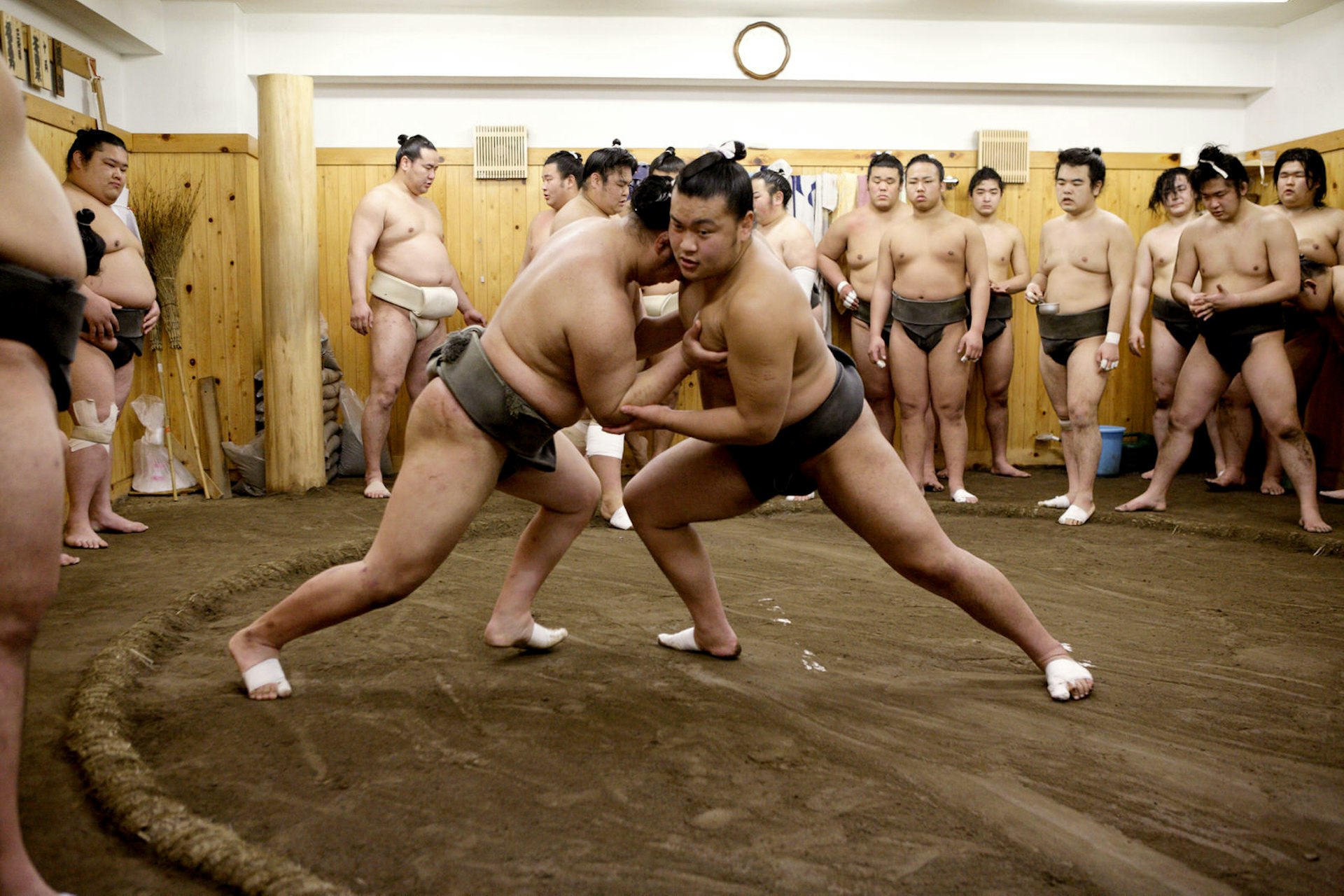 Visit a sumo stable to see wrestlers training for free © Lottie Davies / Lonely Planet
Visit a sumo stable to see wrestlers training for free © Lottie Davies / Lonely Planet
5. Watch sumo practice
Even if you can’t make a sumo tournament, you can see sumo wrestlers going through their training drills at a sumo stable, such as Arashio Stable, where visitors watch the morning practice session (asa-keiko) through windows on the street. Practice typically takes place between 7:30am and 10am on weekday mornings, bar March, July, November and on the week following a major tournament. Call between 4 and 8pm the day prior to confirm if training is on; the stable’s website has a basic sample script for speaking with phone operators in Japanese.
6. Visit Yasukuni Shrine
To some, Yasukuni-jinja is Tokyo’s most controversial religious monument. To others, it’s a source of pride. Then there’s the argument that removing it would amount to revisionist history.
Yasukuni Shrine commemorates Japan’s approximately 2.5 million war dead (moral ambiguities notwithstanding), including the kamikaze pilots of WWII and convicted war criminals. Along its flagstone entranceway, you’ll find locals paying homage to their fallen ancestors indicated by a procession of paper lanterns – all 30,000 of which are illuminated during the summer Mitama Matsuri – while the comparatively humble shrine building is surrounded by blooming groves of sakura (cherry blossoms) in spring.
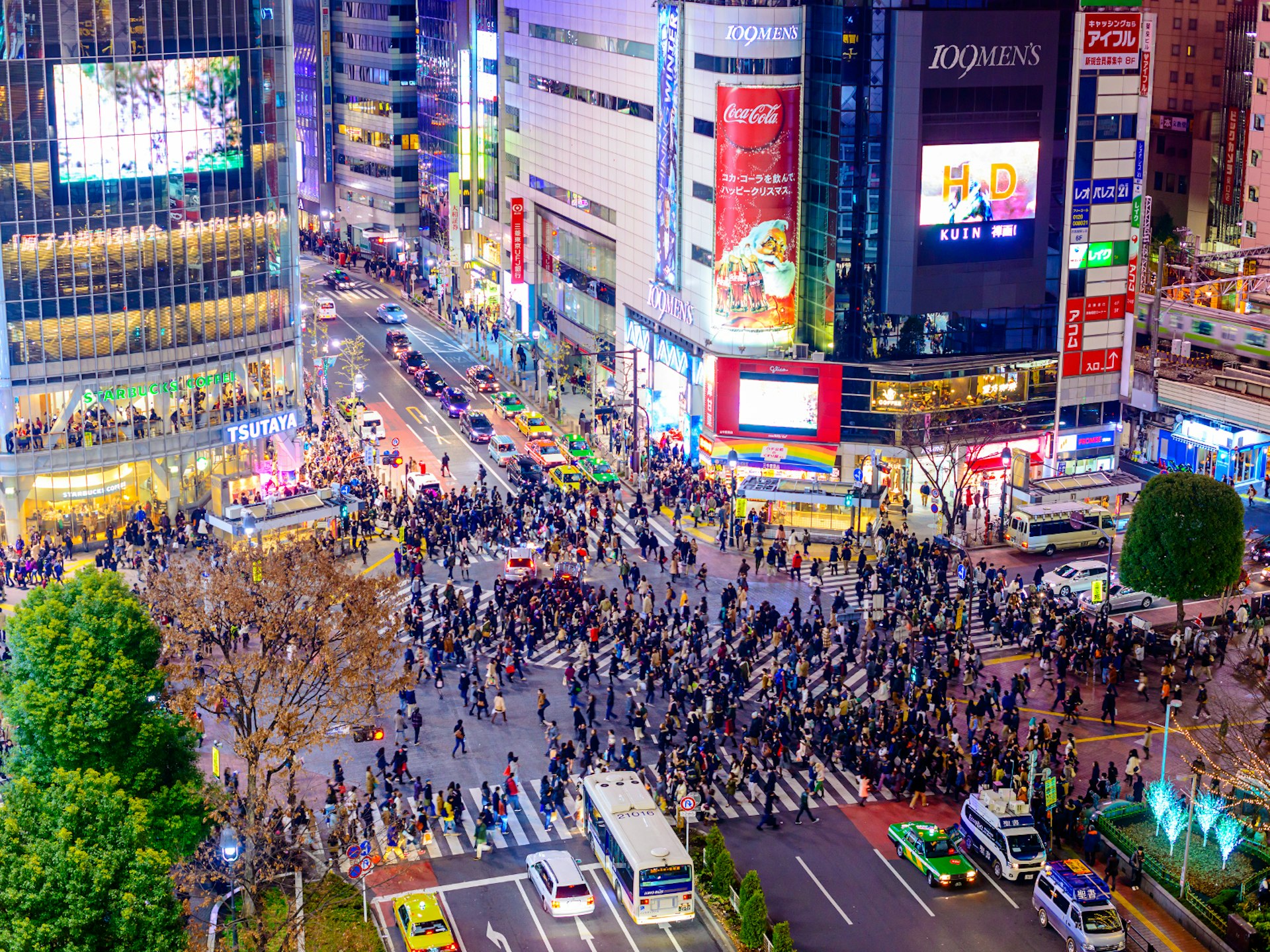 Try to keep up at Shibuya Crossing, one of the world’s busiest pedestrian crossings © Sean Pavone / Shutterstock
Try to keep up at Shibuya Crossing, one of the world’s busiest pedestrian crossings © Sean Pavone / Shutterstock
7. Marvel at Shibuya Crossing
Every few minutes a wave of humanity washes across Shibuya Crossing, thought to be the world’s busiest intersection. Join the masses or stand back and watch. An ideal vantage point is Mag’s Park, on the roof of the Shibuya 109-2 department store. A couple of floors down, at the entrance to Mark City, check out the Myth of Tomorrow, a monumental mural by artist Okamoto Tarō.
8. Say hello to Godzilla
Fans of kaiju (Japanese monster flicks) will want to pay their respects to the giant Godzilla that lords over the Hotel Gracery Shinjuku. Amateur videographers should head down between noon and 8pm when Godzilla belts out thunderous roars on the hour. While you’re here, wander around the electrified Kabukicho neighborhood, Tokyo’s red-light district, or head to nearby Golden Gai, a warren of Showa-period alleyways housing hundreds of shoebox bars.
 A replica of the Statue of Liberty was erected in 1998 as a tribute to Japan’s relationship with France © Arthit Somsakul / Getty Images
A replica of the Statue of Liberty was erected in 1998 as a tribute to Japan’s relationship with France © Arthit Somsakul / Getty Images
9. Walk the Rainbow Bridge to Odaiba
This island of reclaimed land in Tokyo Bay is linked to the city by the Rainbow Bridge, which is illuminated in its eponymous colors come nightfall. Walk over the 798m-long (2618ft) single-span suspension bridge to Odaiba, an uber-modern commercial district, where you can sunbathe on an artificial beach (weather permitting), see a Statue of Liberty replica, and gaze upon a larger-than-life Gundam statue.
10. Have a taste of history at Yebisu Beer Museum
The Yebisu Beer Museum, run by one of Japan’s largest brewers, covers the history of beer in Japan, including displays of cool vintage posters and bottles. Tastings sadly aren’t free, but a serving here is only ¥400 ($2.80).
Planning tip: After you’ve had a tipple, head to the 38th floor of the adjacent Yebisu Garden Tower for free views of the downtown Tokyo sprawl.
11. Visit other weird, wonderful (and free) museums in Tokyo
Tokyo has some of the most bizarre museums in the world, and in a bid to attract curious eyes, many offer free admission. The Meguro Parasitology Museum, thought to be the only institution of its kind globally, displays a range of eldritch parasites suspended in formaldehyde-filled casings. The Rainbow Sewerage Museum delves into the engineering feats necessary to flush excrement from the world’s most populous metropolis – interactive exhibitions included. For coin collectors and enthusiasts, head to the Bank of Japan Currency Museum, which is (ironically) also free. Or check out the Advertising Museum Tokyo, where montage displays of old ads illuminate the visual history of commerce in Japan over the last century or so.
 Stand in awe of the giant tori gate at the Meiju-jingu shrine © enzozo / Shutterstock
Stand in awe of the giant tori gate at the Meiju-jingu shrine © enzozo / Shutterstock
12. Walk the forests of Meiji-jingū
Escape to the densely wooded grounds that envelope the capital’s premier Shintō shrine, Meiji-jingū; the walking path is particularly ethereal on misty and drizzly afternoons. If you’re lucky, you might spot a traditional wedding procession or robe-clad priest.
13. Take a tour of the National Diet
Art and anime not your thing? Then how about a free tour of Japan’s seat of governance, the National Diet, to view the wood-panelled, leather-bound and gilded interiors and the gardens planted with species from across the country. English tours take place on Mondays at 2pm, and Tuesday to Friday at 3pm (excluding national holidays). Reservations, with some stipulations, are necessary.
14. Crack open a beer at one of Tokyo’s parks and gardens
Beautiful foliage and horticultural skills can be admired in Tokyo’s traditional gardens. Free-to-enter gardens include those attached to the Hotel New Ōtani in Akasaka and the Hotel Chinzanso, as well as the lush grounds of Happō-en, near Shirokanedai Station. Tokyo also has excellent public parks, from Ueno-kōen in the north, to Inokashira-kōen in Kichijoji (where the not free-to-enter Studio Ghibli Museum is also located).
Planning tip: Parks are prime spots for joining beer-fueled hanami (flower-watching) parties during the spring cherry blossom season.
 Join a
Join a
15. Travel back to pre-WWII Tokyo in Yanesen
The streets of Yanaka, Nezu and Sendagi – three areas collectively known as Yanesen – offer a lens into pre-WWII Tokyo. These areas were collectively spared by firebombings, so you’ll find narrow walking streets, small temples and shrines, craft shops, galleries, and cafes, and Yanaka-reien, one of the city’s oldest graveyards. Interesting galleries include SCAI the Bathhouse, in a 200-year-old public bath.
16. Traverse Tokyo’s Winter Wonderlands
Tokyo embraces the festive spirit every winter with seasonal illuminations in parks and commercial complexes, many of which are free of charge. The Ao no Doukutsu (blue cavern) tunnels through Yoyogi Park with 600,000 crystal blue lights, while the barren zelkova trees of Omote-sandō are wrapped in champagne gold. Admire a glimmering LED display in view of Tokyo Tower from the observation bridge at Roppongi Hills. Or head to the Yebisu Garden Christmas Market presided over by a 10m-tall Christmas tree and Baccarat crystal chandelier.
 The Roppongi Hills complex boasts contemporary architecture and public art © cowardlion / Shutterstock
The Roppongi Hills complex boasts contemporary architecture and public art © cowardlion / Shutterstock
17. Get arty in Roppongi
This fabled nightlife neighborhood is also a treat to explore in daylight. There’s plenty of public art scattered around the glitzy commercial complexes of Roppongi Hills and Tokyo Midtown, as well as dazzling contemporary architecture at the National Art Center Tokyo. Tokyo Tower, the Eiffel-esque symbol of the modern metropolis is nearby; there’s an admission charge, but a free stroll around the base gives a real sense of its imposing stature.
[h2] 18. Take in the views from the Tokyo Metropolitan Government Building
Survey the city 202m (663ft) above ground from the observation deck of the Tokyo Metropolitan Government Building – on a clear day you may catch a glimpse of Mt Fuji. Come at dusk to see spectacular sunsets and the city burst into neon-lit action.
19. See the action at Tsukiji Market
Tsukiji Market has a bunch of stalls selling fresh seafood, dried aonori (edible seaweed), pickles, bamboo rolling mats, kitchen knives, and more. Come early to get breakfast (at a price) from the food vendors and to bask in some old Tokyo ambience. If the weather is on your side, embark upon a lengthy (approximately 6km/4-mile) stroll along the Sumida River promenade to Asakusa in the north, where Senso-ji Temple resides. Expect to find afternoon joggers, lone musicians practicing their craft, and chugging river taxis along the way.
20. Climb Mount Takao
Deep in the west Tokyo suburbs sits Mount Takao, a 599m-tall (1,965ft) peak topped by an observation area, beer garden and Buddhist temple. There are several walking trails to the top, all of which are manageable with a moderate level of fitness. Head during the koyo (autumn leaves) season for the best views – but be prepared for crowds.


